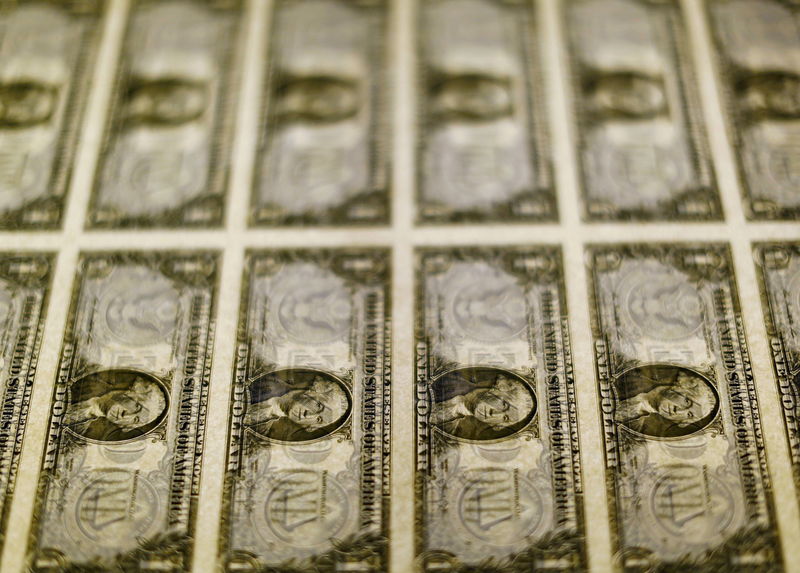Investing.com - The dollar extended gains against other major currencies on Thursday, helped by the release of upbeat U.S. data, while the Federal Reserve’s decision to raise interest rates on Wednesday continued to support.
EUR/USD dropped 0.54% to 1.1156, the lowest since May 30.
The U.S. Department of Labor said initial jobless claims in the week ending June 10 decreased by 8,000 to 237,000 from the previous week’s total of 245,000. Analysts expected jobless claims to fall by 3,000 to 242,000 last week.
Separately, the Federal Reserve Bank of Philadelphia said its manufacturing index slipped only to 27.6 this month from May’s reading of 38.8. Analysts had expected the index to decline to 24.0.
Meanwhile, the Empire State manufacturing index climbed to 19.80 in June from -1.00 the previous month, compared to expectations for a reading of 4.00.
The data came a day after the Fed raised interest rates from 1.00% to 1.25%, in a widely expected move. However, disappointing U.S. inflation data released the same day raised questions about whether the central bank will be able to hike rates again later this year.
GBP/USD eased 0.09% to 1.2734, after briefly hitting session highs of 1.2795 after the Bank of England left its monetary policy unchanged, in line with expectations, but members of the Monetary Policy Committee surprised markets with three dissents.
Earlier Thursday, the U.K. Office for National Statistics said retail sales fell 1.2% in May, compared to expectations for a 0.8% fall. Year-on-year, retail sales increased by 0.9% last month, compared to forecasts for a 1.7% rise.
Core retail sales, which exclude automobiles and fuel, decreased by 1.6% in May, compared to forecasts for a 0.8% slide.
USD/JPY climbed 0.68% to 110.32, while USD/CHF gained 0.39% to 0.9748.
Also Thursday, the Swiss National Bank left interest rates on hold at -0.75%, in line with expectations and said the local currency was still "significantly overvalued."
The SNB added that it will "remain active in the foreign exchange market, as necessary," while taking the overall currency situation into consideration.
The Australian and New Zealand dollars turned lower, with AUD/USD down 0.22% at 0.7573 and with NZD/USD tumbling 1.11% to 0.7189.
The Australian Bureau of Statistics earlier reported that the number of employed people rose by 42,000 in May, beating expectations for a 10,000 gain. The unemployment rate ticked down to 5.% from 5.7%.
Separately, Statistics New Zealand said gross domestic product rose 0.5% in the first quarter, confounding expectations for a 0.7% growth rate. Year-on-year, the New Zealand economy grew 2.5%, disappointing forecasts for a 2.7% growth rate.
Meanwhile, USD/CAD added 0.17% to trade at 1.3267, off the previous session’s more than three-month low of 1.3163.
In Canada, data showed that manufacturing sales increased by 1.1% in April, beating expectations for a 0.7% rise, after a revised 0.8% gain the previous month.
The U.S. dollar index, which measures the greenback’s strength against a trade-weighted basket of six major currencies, was up 0.51% at 97.40, its highest level since June 9.
